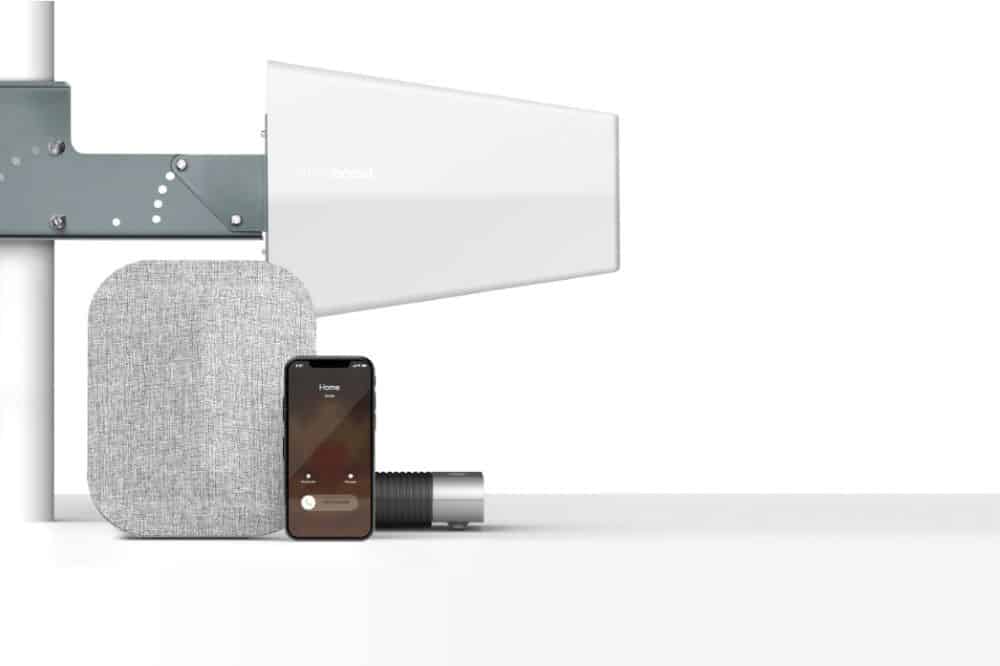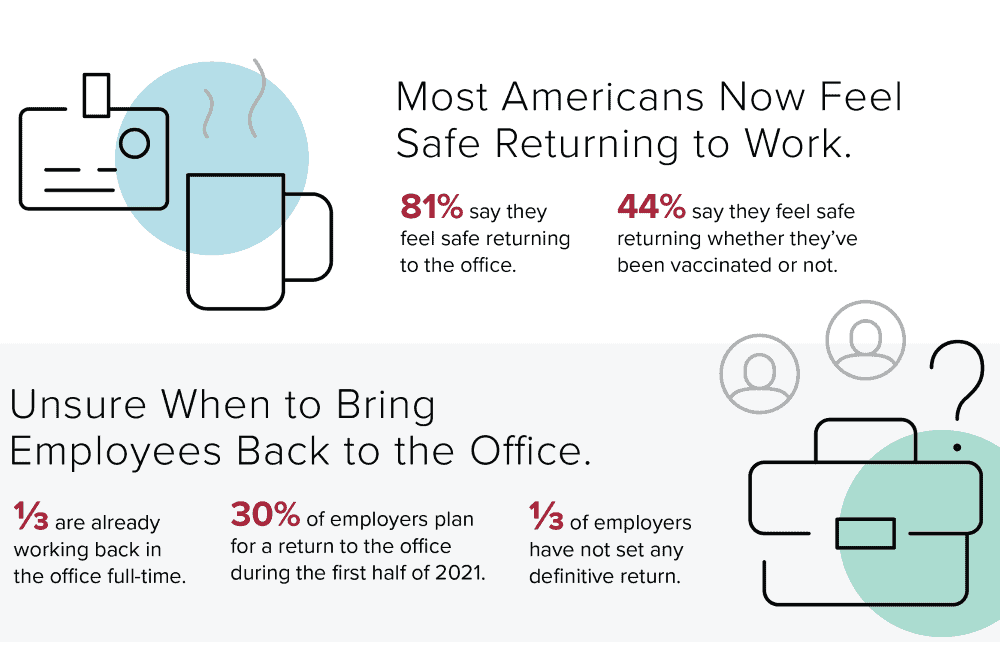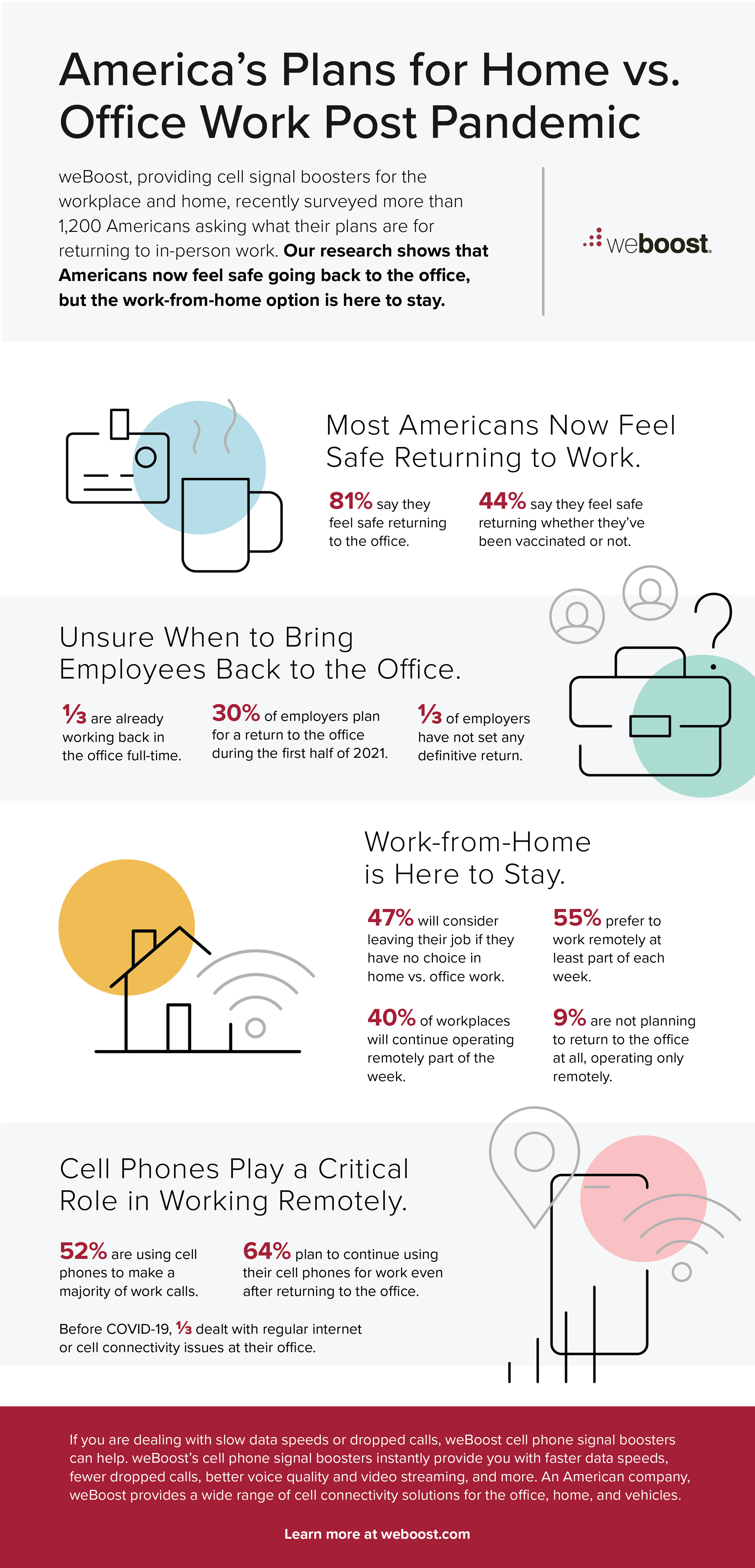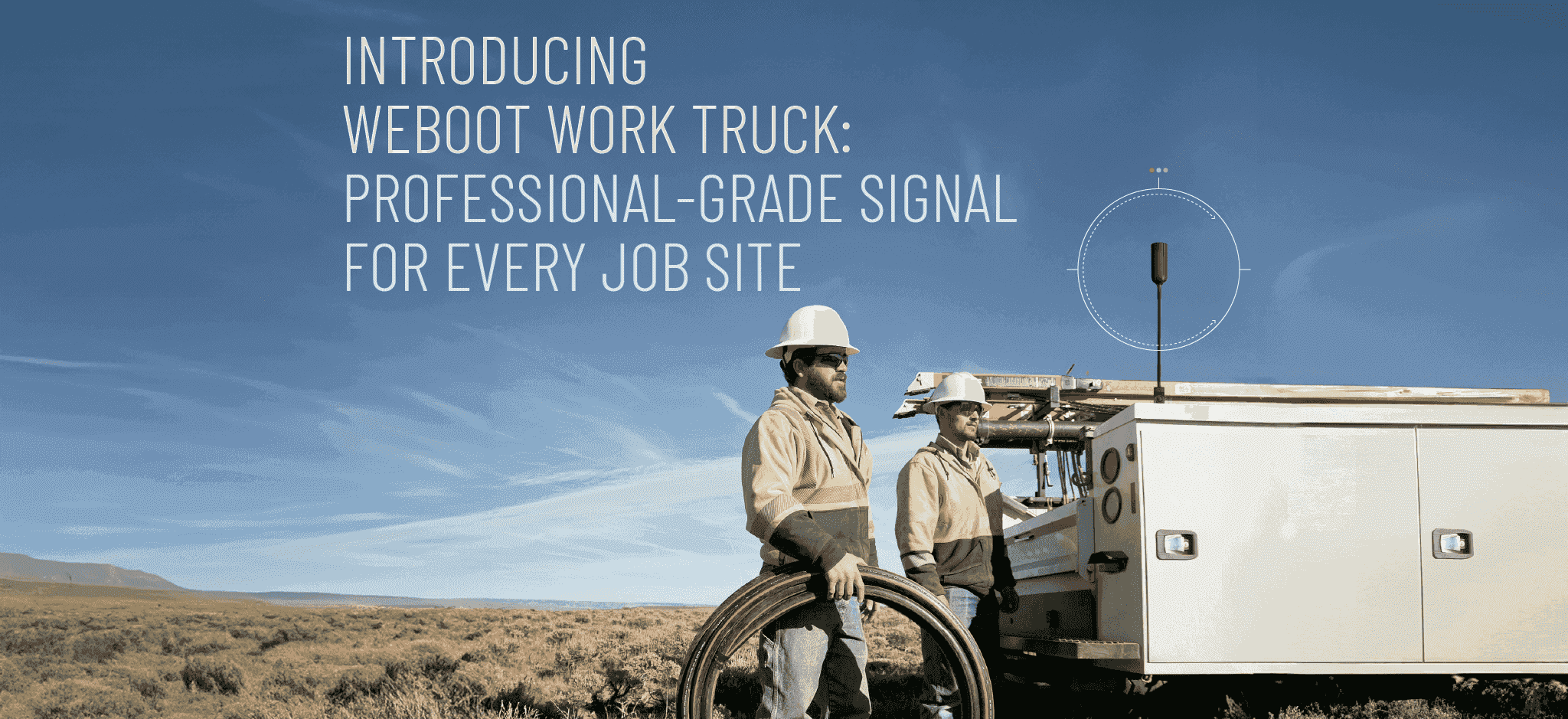What Americans Think About Returning to Work After the Pandemic
Posted on 6/4/2021 by Izzy Jack
Now that 41 percent of Americans are fully vaccinated, more people are venturing out of the safety of their homes to resume life as usual. A big question on everyone’s mind is what will returning to the office look like after a year of working remotely?
With all the uncertainty surrounding work in a post-pandemic world, weBoost decided to ask Americans what they think about returning to work. We surveyed more than 1,200 Americans asking what their plans are for returning to in-person work. Our research shows that Americans now feel safe going back to the office, but the work-from-home option is here to stay. Here’s a closer look at our findings.
Americans Feel Safe Returning to Work
When it comes to return-to-work plans, safety is top of everyone’s mind. No matter the industry, employers are focused on how they can best protect their workers and make them feel safe in the office. From modifying office layouts to posting instructions on proper hand hygiene, businesses want to do everything they can to give employees confidence in returning.
To better understand the situation, we asked survey respondents if they feel safe returning to office. In our research, we found that:
- 81% say they feel safe returning to the office.
- 44% say they feel safe returning whether they’ve been vaccinated or not.
Many expect American workers to feel hesitant about returning to business as usual. But for the most part, employees feel safe resuming in-office work — regardless of their current vaccination status.
Employers Are Unsure of When to Bring Employees Back
As our country works to adapt to the post-pandemic new normal, businesses are ready to bring their employees back. There are many considerations to keep in mind, and businesses are faced with the challenge of putting employee well-being first while also keeping business interests in mind.
Through our survey, we found that some respondents have already returned to work, while others have yet to learn of a specific return date. Here’s a look at the results:
- A third of respondents report they are already working back in the office full-time.
- 30% of respondents said they are preparing to be back in the office in the first half of 2021.
- A third of respondents said their employer had not set any definitive return.
After such a tremendous disruption to typical work policies, employers are unsure of how to start and when exactly employees should return to their desks. One thing we know for certain is that the world of work is likely to look different post-pandemic.
Work-from-Home Is Here to Stay
The pandemic forced many of us into our homes, which prompted employers to provide greater flexibility in remote work. After a year of working remotely, businesses are figuring out what makes their company run best.
Can high productivity levels continue outside of the office? Will employees expect greater flexibility when they do return? Will employees refuse to return in the wake of strict in-office policies? With consideration toward these questions, employers are looking at in-office, fully remote, and hybrid models of work as they recall their employees.
Here’s what survey respondents had to say about returning to the office:
- 47% will consider leaving their job if they have no choice in home vs. office work.
- 55% prefer to work remotely at least part of each week.
- 40% of workplaces will continue operating remotely part of the week.
- 9% are not planning to return to the office at all, operating only remotely.
While workplace policies will look different from company to company, we know that work-from-home is going to remain an option in the post-pandemic world. Whether employees work fully remote or work from home a few days out of the week, workplace flexibility is likely to continue.
Cell Phones Play a Critical Role in Remote Work
Now that we know remote work is here to stay, connectivity is more important than ever. Employees need to stay connected to the office and their co-workers to maintain productivity. Cell phones and cellular connectivity will continue to play a key role in maintaining an effective work-from-home policy.
Here’s a look at what survey respondents said about cellular devices and their work:
- 52% are using cell phones to make a majority of work calls.
- 64% plan to continue using their cell phones for work even after returning to the office.
- Before COVID-19, a third of respondents dealt with regular internet or cell connectivity issues at their office.
weBoost Helps You Stay Connected

If you’re dealing with slow data speeds or dropped calls, weBoost can help. weBoost’s cell phone signal boosters instantly provide you with faster data speeds, fewer dropped calls, better voice quality and video streaming, and more. We provide a wide range of cell connectivity solutions for the office, home, and vehicles. Whether you need a solution for your small business or your home office, weBoost can keep you connected now and in the future.







